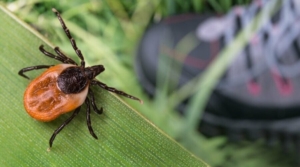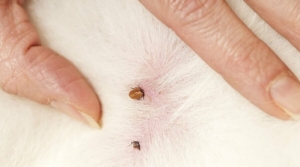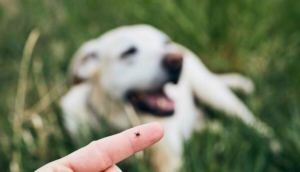How to Prevent Ticks
Effective Ways to Keep Ticks Out of Your House and Yard
As the weather warms up and we head outdoors more often, ticks become an inevitable nuisance that we must deal with.
While ticks themselves are annoying, the real concern is the diseases they can transmit through their bites. Lyme disease, RMSF, babesiosis, anaplasmosis, Powassan virus – the list of tick-borne illnesses seems endless.
The good news is that with some vigilance and preventative measures, you can greatly reduce your risk of bites and the dangers that come with them.
Eco Pest Control Adelaide is here to share the best practices for keeping ticks off your body, out of your home, and away from your pets.
Types of Ticks in Australia
There are about 70 different kinds of ticks in Australia. But only a few types commonly bite humans and pets:
- Paralysis ticks – Live along the eastern coast. They can make you sick with paralysis. They bite pets and people.
- Brown dog ticks – Found all over Australia. They carry bacteria that causes Queensland tick typhus. They mostly bite dogs.
- Bush ticks – Live in most parts of Australia. Also carry the bacteria for Queensland tick typhus. Sometimes bite humans.
- Cattle ticks – Mostly in far north Queensland. Carry the bacteria for Queensland tick typhus. Bite cows a lot but sometimes bite people.
- Scrub ticks – Along the eastern coast. Have the Queensland tick typhus bacteria. Bite humans, pets, and farm animals.
- Kangaroo ticks – Everywhere in Australia. Carry the Queensland tick typhus bacteria. Bite kangaroos and wallabies but also bite humans.
Other ticks rarely bite humans. Paralysis ticks and brown dog ticks are the most risky for people’s health in Australia.
Can Ticks Transmit Disease?
Yes, ticks can transmit a wide variety of debilitating and potentially serious illnesses.
- Lyme disease – Caused by bacteria called Borrelia burgdorferi. Early symptoms include rash, fever, chills, headache, fatigue. Untreated, can progress to facial paralysis, arthritis, heart palpitations.
- Anaplasmosis – Caused by Anaplasma phagocytophilum bacteria. Flu-like symptoms such as fever, chills, headache, muscle aches.
- Babesiosis – A parasitic disease caused by Babesia microti parasites. Resembles malaria with fever, chills, sweating, muscle aches, fatigue.
- Ehrlichiosis – Bacterial illness with flu-like symptoms. Can affect kidneys, central nervous system, lungs.
- Rocky Mountain Spotted Fever (RMSF)- Caused by Rickettsia rickettsii bacteria. High fever, headache, abdominal pain, rash. Can be deadly if untreated.
- Tularemia – Caused by Francisella tularensis bacteria. Ulcer at the bite site, fever, chills, headache. Can affect the lungs, eyes, and lymph nodes.
- Powassan virus – A rare but serious tick-borne virus. Often causes encephalitis (brain inflammation). Can lead to permanent neurological damage.
The best way to avoid these illnesses is to prevent bites in the first place.
Signs and Symptoms of a Tick Bite
Sometimes bites go unnoticed, since they are painless and cause no immediate symptoms. Be on the lookout for:
- A small red bump on your skin that looks like a mosquito bite
- A tick burrowed into your skin – look closely for a small dark speck
- A rash around the bite – may look like a bull’s eye with a red ring around a clearing
- Flu-like symptoms emerging a few days or weeks after outdoor exposure.
Check your skin carefully after being outside, especially in tick-prone areas. Promptly remove any attached ticks using forceps. See a doctor if you develop any concerning symptoms.
How to Avoid Ticks
Let’s explore some key strategies for keeping ticks off your body when spending time outdoors:
Cover Up
- Wear light-colored sleeved shirts and long trousers so ticks are easier to spot. Tuck the pants into the socks.
- Wear closed toe shoes and tuck shoelaces in.
This creates a barrier and blocks ticks from accessing your skin.
Treat Clothes and Gear
- Pretreat clothing, shoes, tents, backpacks, etc., with the insecticide permethrin. It kills ticks on contact and lasts through several washings, even with hot water.
- Treat dogs with permethrin too. Never use permethrin directly on skin.
Do Tick Checks
- Check your clothes and any exposed skin frequently for ticks when outside.
- Shower soon after coming indoors to wash off any unattached ticks.
Use Repellent
- Apply EPA-registered repellents like DEET or picaridin to exposed skin and clothes.
- Natural repellents like lemon eucalyptus oil.
Reapply as needed every few hours.
Dry Clothes
- Put clothes in a hot dryer on high heat for 10 minutes to kill any lingering ticks.
Keep Grass Short
- Mow lawns frequently. Ticks like tall grasses and brush.
Discourage Deer
- Keep deer out of your yard with fencing, noisemakers, repellents. Deer can bring ticks.
Be Tick-Smart with Pets
Dogs and other companion animals can transport ticks into your home. Reduce this risk by:
- Using veterinarian-prescribed prevention products on pets
- Checking pets for possible ticks daily, especially after being outdoors
- Bathing pets frequently with shampoos that repel or kill ticks
- Keeping dogs away from tick hotspots like dense woods
How to Remove an Attached Tick
If you discover a tick latched onto your skin, it’s crucial to use proper removal techniques to avoid leaving the head or mouth parts embedded. Here are the best practices:
- Use pointed tweezers and grasp the tick close to the skin’s surface
- Pull straight up with steady, even pressure – do not twist or jerk
- Avoid crushing the tick’s body – this may transmit bacteria
- Thoroughly disinfect the bite area and wash hands afterwards
- Do not try other methods like using fingers, heat, etc. Stick with forceps for safe, effective removal.
- Save the tick in a sealed container in case you develop symptoms later. It can be identified and tested for infection.
See a doctor promptly if any unusual rashes or flu-like symptoms emerge after a known bite. Early treatment for many illnesses transmitted by ticks improves outcomes.
Conclusion
While not completely avoidable, taking smart precautions like covering exposed skin, using repellents, and promptly removing attached ticks can greatly reduce your chances of encountering a bite or illness from these pests.
Be vigilant when outdoors, especially in wooded, brushy areas and leaf litter, as they are prime habitats for these insects. Thoroughly check yourself, kids, and pets for possible ticks after coming inside. Use forceps to promptly remove any.
Be vigilant for any unusual rashes or flu-like symptoms in the days following potential exposure. With proper care and prevention knowledge, you can enjoy the outdoors this season without the worry!



